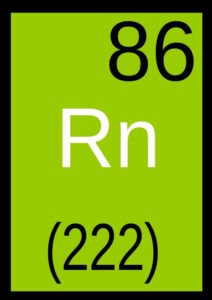 Why should I have my home tested for radon?
Why should I have my home tested for radon?
The Environmental Protection Agency has classified Radon as the second leading cause of lung cancer in North America, second only to smoking, and the cause of 20,000 lung cancer deaths per year. One in fifteen homes in the country test positive for high levels of radon, but that number spikes in Colorado to one in three.
What is radon?
Radon is a highly radioactive, naturally occurring gas. It is both colorless and odorless so it cannot be detected in a home without a measurement device. Radon is produced deep underground as a byproduct of the decay of other radioactive materials such as uranium or plutonium. As it permeates to the surface of the earth it penetrates your home through the foundation, basement or crawl space where the occupants then breathe it in.
There are no immediate health effects of Radon exposure, however long term exposure can be very detrimental to the health of the buildings occupants, especially smokers who are already at a high risk for lung cancer. The danger becomes clear when you think about where you spend most of your time.
How does a radon test work?
Since radon is radioactive, it is measured in picocuries per liter of air (pCi/L), which is simply a measure of radioactivity. A radon monitor takes air samples every hour and measures the picocuries of that sample.
The monitor needs to be placed in the home for at least 48 hours and left undisturbed in closed home conditions. This only means the windows need to be closed and the doors not left open, the occupants can remain in the home during the test and are encouraged to use the heating and air conditioning as usual.
The reason it takes 2 days is because radon levels fluctuate all day long and even seasonally, so a single test won’t give you an accurate idea of how much radon the home is receiving.
Is radon common in my area?
The EPA has designated three zones of radon exposure. Zone #1 is defined as areas with 4 pCi/L or higher, zone #2 is anything between 2 and 3 pCi/L, zone #3 is 1 or lower. The average outdoor level of radon exposure is about 0.4pCi/L.
The EPA recommends radon remediation measures be implemented in all Zone #1 areas, anywhere that averages a reading of 4 or higher.
If you live in Colorado, you live in a Zone #1 high radon zone. The state of Colorado department of public health and environment designates every single county in the state as “High radon potential” meaning probable indoor radon average.
See link below to view the map
https://www.colorado.gov/pacific/cdphe/colorado-radon-zones
What do I do if my home tests high for radon?
Remember all is not lost; you are not buying a lemon or a radioactive home. Radon levels can be brought down with proper radon mitigation measures and these do not cost an arm and a leg to implement.
If you are selling your home it’s a good idea to have your home tested for Radon since many homebuyers and real estate agents are all too aware of the dangers posed by Radon. Having Radon remediation measures installed in the home can actually add to its value and give your agent a great new selling point.
If you are buying a home that tests high for radon, your agent can negotiate the installation of a radon mitigation system as part of the deal, thereby fixing the problem and getting you a lower price on your new safe home.
For more information on radon please read over this Guide produced by the EPA.
https://www.epa.gov/sites/production/files/2015-05/documents/hmbuygud.pdf
